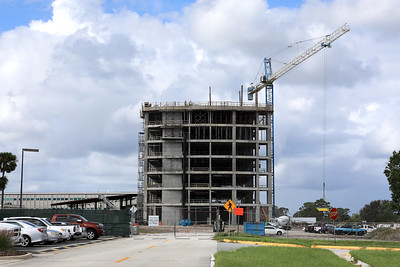The 8th annual Gordian State of Facilities in Higher Education report has been released. No surprise – higher education facilities are in deep trouble. Campus construction has continued at a rapid pace while enrollment has not. In fact, the growth rate of new space on campus has outpaced student enrollment by a factor of 8. Campus administrators have yet to identify exactly who they’re building all this unnecessary space for.
But it gets worse.
“Enrollment at all but the most successful research schools has not warranted the ongoing maintenance and, in many cases, expansion of campus spaces across the industry.”
In case you missed it, “Enrollment… has not warranted the ongoing maintenance… of campus spaces.”
Let that sink in.
There are not enough students to make it worthwhile for institutions to take care of campus buildings. And yet, the building spree continues unabated. Higher education institutions have too much space to take care of as-is, so naturally, their administrations build more.
Students want excellent higher education facilities
Years ago, residential campuses had an epiphany. The condition of their dorms had a direct bearing on student enrollment. It seems that students didn’t want to live in crappy dorms. So, universities – and to a lesser extent – community colleges, went on a dorm building spree. Those that didn’t build their own dorms, paid someone else to build and operate dorms for them.
At the same time, colleges and universities have put off renovating the higher education facilities they have. (Apparently, it hasn’t registered that students don’t want to learn in crappy buildings, either.) Unfortunately, the new construction hasn’t resulted in proportionally higher maintenance budgets. The average maintenance backlog is now at $106 per gross square foot (gsf). That’s up from $100/gsf in 2018.
WCC is a prime example here. Its already woefully inadequate maintenance budget was cut to just $300,000. That money is intended to cover 1.2M square feet of campus space. (I’ll save you the trouble – that’s $0.25 per square foot.) To show how bad it has gotten, target spending for both rehabilitation and maintenance was about $6.25/sq. ft.in 2019. WCC should be spending about $7.5M per year on building renovations and maintenance. Prior to the pandemic, it budgeted $750,000 per year for maintenance – one-tenth of what it needed. It goes without saying (but I’ll say it anyway), the less you spend on maintenance, the more your facilities backlog grows.
So, cutting the maintenance budget is willful neglect.
Where is all the money going?
The Gordian report sums up the issue in one short sentence.
“The data says that we need to use less space because we simply can’t care for what we’ve built.
There it is. Stop building. We (the taxpayers) don’t need to pay for buildings that campus administrators can’t (or won’t) take care of. Here at home, it is time to conduct an honest assessment of how heavily this phenomenon has affected WCC. We need to determine why WCC can’t take care of its buildings, given that it gets more property tax revenue than all but a handful of community colleges.
Where is all the money going? What are we paying for instead of taking care of the buildings?
Photo Credit: NASA Kennedy , via Flickr































